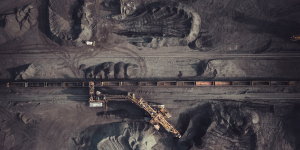TAKEAWAY: This article covers the common OHS risks, challenges, and compliance regulations to help employers in the territories stay on top of their OHS responsibilities and ensure their workplace campaigns are safe and effective.
Jump Ahead
Are you a small business operator in Canada’s territories? As an employer, worker health and safety are among your highest priorities. Failure to protect employees from preventable workplace hazards can have significant ramifications at a business and individual level.
Given the wide range of occupational health and safety risks and regulatory requirements for northern employers, it can be challenging to figure out which safety management strategies are most effective.
Canada’s three territories, Yukon, Northwest Territories, and Nunavut, lie in the northern part of the country. Unlike the country’s provinces, the federal government delegates the territories’ powers, and therefore, they have no sovereignty as such.
The territories cover over one-third of Canada’s land mass yet are home to only 0.3 percent of the population. Differences in major industries and health and safety challenges are evident when comparing the territories with Canada’s provinces. Employers must understand the issues relevant to the territories to help keep their workers safe and healthy.

SureHire offers a wide range of occupational testing programs and additional resources to support employers and their workers, including audiometric testing, fitness-to-work testing and lung health testing.
Top Economic Sectors in the Territories
Canada’s territories occupy remote areas, meaning major industries differ from the provinces. While agriculture, forestry, and manufacturing are mainstays in several provinces, these industries are not significant in the territories. Weather and soil conditions make farming and agriculture challenging, and expensive labour and supplies mean that manufacturing is not a substantial part of the economy.
Mining occupies a prominent place in the territories’ economic activity. Statistics highlight strong growth in gold and silver mining in Yukon and Nunavut and a notable increase in diamond mining in the Northwest Territories in 2021.
Mineral and phosphate mining, gasoline and petroleum bulk stations, and supermarkets and grocery stores are the Northwest Territories’ largest industries by revenue. Yukon’s most prominent industries by revenue are gold and silver ore mining, copper, nickel, lead, and zinc mining, and gasoline and petroleum bulk stations.
Significant sectors in Nunavut include mineral exploration and mining, traditional harvesting, fishing, tourism, and art.
Mining, public administration, real estate, and rental leasing were the highest contributors to GDP in the Northwest Territories and Yukon in 2022. The 2021 statistics were similar and show that mining, quarrying, and oil and gas extraction is the top sector by GDP in the Northwest Territories and Nunavut, while public administration comes out slightly higher in Yukon.
Transportation and warehousing, retail trade, and accommodation and food services were the highest contributing sectors for employment in the Northwest Territories. Retail trade, mining, healthcare, and social assistance were the most significant contributors to the Yukon territory.
Workplace Health and Safety Regulatory Bodies in the Territories
Employers must know about their territory’s occupational health and safety regulatory bodies. Such agencies promote, coordinate, administer, and enforce health and safety regulations to reduce workplace illness, injuries, and fatalities.
The Workers’ Safety & Compensation Commission (WSCC) administers health and safety acts in the Northwest Territories and Nunavut. They cover the Safety Act and Regulations, Mine Health and Safety Act and Regulations, Explosive Use Acts and Regulations, and Summary Convictions Procedures.
The Yukon Worker’s Safety and Compensation Board aims to protect Yukon workers by preventing disability, providing compensation, providing workplace safety training and inspections, and offering service and support for injured workers. The board enforces the Yukon Occupational Health and Safety Act.
Health and Safety Risks and Challenges for Territories Employers
Given the tiny population across the Canadian territories, it’s not always straightforward to look at injury statistics if they’re based purely on the numbers of injuries and fatalities compared with more densely populated areas of the country.
However, a 2019 annual occupational injury report for federally-regulated employees offered insights into injury and fatality rates in the territories. Nunavut had a higher Disabling Injury Frequency Rate (DIFR) than any other province or territory.
Conversely, Nunavut was one of only three provinces or territories reporting zero workplace fatalities in 2019. However, the Northwest Territories and Yukon had higher Fatal Injury Frequency Rates (FIFR) than any other provinces or territories in Canada.
These statistics highlight the need for robust workplace health and safety programs in the territories. Despite the small population base, workplace injuries and fatalities are relatively high. 2016-2020 data also confirmed a higher Five-year Average Injury Fatality Rate in the territories compared with Canada’s provinces.
The Yukon Workers’ Safety & Compensation Board accepted the highest number of injury claims from Northwest Territories and Nunavut workers related to contact with objects and equipment and bodily reaction and exertion in 2020 and 2021. Falls were also a common cause of injury.
Trades, Transport, Equipment Operators, and Related Occupations had by far the highest number of claims compared with other industries.
These statistics help highlight priority health and safety areas for employers in the Canadian territories.
Occupational Tests Territories Employers Should Consider
Given that mining is the dominant industry in Canada’s territories, we’ll highlight occupational tests relevant to this industry. Mining consistently comes up as one of the country’s deadliest industries, so strong health and safety policies and procedures are imperative for mining industry employers.
The territories are remote regions, and mining is an occupation that requires employees to work in areas that are usually even more remote than workers in other industries. Therefore, employers should consider comprehensive medical examinations for workers, considering healthcare is often far away.
Workers are often exposed to harmful substances, such as coal dust, so a lung health monitoring program is essential. Employers can select testing services such as chest x-rays, mask-fit testing, and spirometry testing to help protect employees. Audiometric testing may also be required due to loud work environments.
Transportation and trade workers in the territories had high injury claim rates, highlighting the need for a robust health and safety focus in these industries.
Transportation workers have highly safety-sensitive positions, so drug and alcohol testing should be a high priority. Employers can choose from DOT or non-DOT random testing, as applicable, and carry out Reasonable Suspicion Training to raise awareness among supervisors and employees.
Tradespeople often have physically demanding job roles, so employers in this industry can invest in Fitness-to-Work Testing. This testing ensures the worker is a good fit for their role and ultimately helps decrease the incidence of work-related injuries from factors such as over-exertion.

SureHire offers a wide range of occupational testing programs and additional resources to support employers and their workers, including audiometric testing, fitness-to-work testing and lung health testing.
You May Also Be Interested In…
- Do You Have Reasonable Suspicion?
 Employers cannot initiate reasonable suspicion testing without first going through the 5-step process. Reasonable suspicion training provides critical information about how to initiate reasonable suspicion testing, including the 5-step process and other tools that employers can use to help manage the misuse of alcohol and drugs in the workplace.
Employers cannot initiate reasonable suspicion testing without first going through the 5-step process. Reasonable suspicion training provides critical information about how to initiate reasonable suspicion testing, including the 5-step process and other tools that employers can use to help manage the misuse of alcohol and drugs in the workplace. - An Employer’s Guide: What You and Your Employees Need to Know About DOT Drug & Alcohol Testing
 When implementing or maintaining DOT Drug & Alcohol testing, there are key areas that employers should consider.
When implementing or maintaining DOT Drug & Alcohol testing, there are key areas that employers should consider. - SureHire Occupational Testing Acquires COHR Health: A Positive Step Towards Safe, Healthy, Productive Workforces and Communities
 We are thrilled to announce that today, May 6, 2024, SureHire Occupational Testing has officially acquired COHR Health, a well-known leader in occupational health services. Read on…
We are thrilled to announce that today, May 6, 2024, SureHire Occupational Testing has officially acquired COHR Health, a well-known leader in occupational health services. Read on… - Occupational Testing Use Case – Mining
 In this case study, we will explore how mining companies can use various types of occupational tests to reduce Total Recordable Incident Rates (TRIR) long term.
In this case study, we will explore how mining companies can use various types of occupational tests to reduce Total Recordable Incident Rates (TRIR) long term. - 9 Strategies to Keep Workers Cool on Drilling Sites During Hot Summer Months
 This article delves into strategies to keep workers cool and safe on drilling sites during the hot summer months.
This article delves into strategies to keep workers cool and safe on drilling sites during the hot summer months. - Hearing Conservation Basics: How to Manage Occupational Noise
 Learn how to proactively mitigate occupational noise risks and help prevent NIHL among workers.
Learn how to proactively mitigate occupational noise risks and help prevent NIHL among workers.

